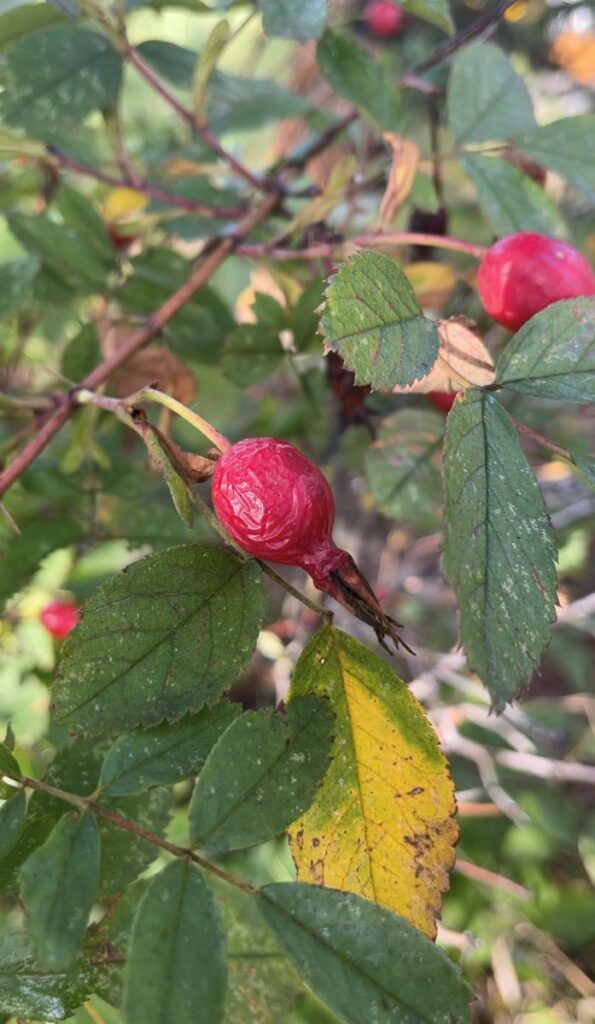While the first frosts of fall can bring an end to many foraging opportunities, it also opens a world of new opportunity. Just as in a garden, many of the forest’s offerings can either get sweeter with a touch of frost or can withstand the colder temps until much later into the season. Berries such as highbush blueberries and highbush cranberries are at their prime this time of year and plants such as dandelion, wild chamomile, yarrow and many coniferous trees can still be harvested until the cold of winter takes hold.
Wild rose (Rosa acicularis) is another plant that has an extended harvest window throughout the year. Rose petals can be harvested in the spring, and rose hips taken in the fall, with care and attention taken to ensure that no overharvesting occurs, and the same patch can produce reliably for you year after year. The hips are more desirable to harvest after a light frost has touched them, but before they freeze.
The benefits of rosehips are vast, and they can be used medicinally, culinarily and cosmetically. They can be utilized fresh or dried; popular uses for rosehips include teas, syrups, jellies or in serums for skincare. If you are consuming rosehips, care should be taken to remove the seeds from the inside of the hips. The hairy seeds can cause digestive upset when consumed but removing them is as simple as slicing the rosehip in half and scraping out the seeds.
Wild rose hips can be found in both rural and suburban settings. Care must be taken to avoid high-traffic areas, such as the sides of highways or areas that have been sprayed, as the plants may be contaminated. As always, investing in a good plant ID book is essential to being confident while out foraging, and don’t ingest anything if you are unsure of the identification. Happy foraging!



